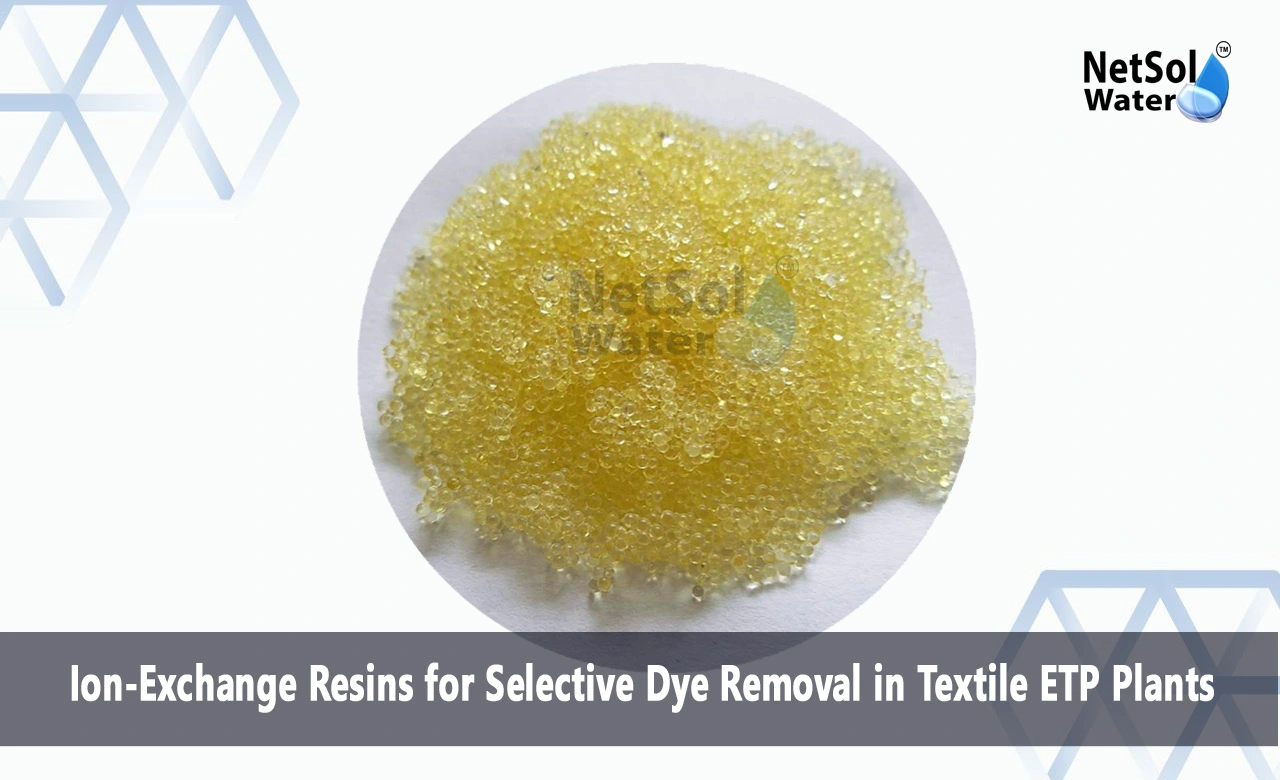Ion-Exchange Resins for Selective Dye Removal in Textile ETP Plants
The textile industry is dynamic, crafting a wide range of colorful fabrics and clothes to match global fashion trends. Yet, the dyeing processes it employs produce significant amounts of colored wastewater. Without proper treatment, this effluent can harm the environment and water sources.
Traditional wastewater treatments struggle to fully remove dyes, resulting in colored wastewater flowing into rivers and lakes. This not only affects how these water bodies look but also disrupts aquatic life and adds to water pollution.
Ion-Exchange Resins: A Selective Solution
In the last few years, more people are using ion-exchange resins to clean up dye from water used in making clothes. These resins are made of special stuff that can grab onto certain dyes and take them out of the water. They work better than old ways because they can pick out specific dyes, making the water cleaner. They're also cheap and good for the environment because we can use them again and again. So, they're a great way to stop dye from polluting water in the clothing industry.
The Principles of Ion-Exchange Resins
Ion-exchange resins are composed of a matrix of insoluble, cross-linked polymer chains with attached functional groups. These functional groups carry either a positive or negative charge, allowing them to attract and bind with oppositely charged ions or molecules present in the solution.
Cation exchange resins have negatively charged functional groups and are effective in removing positively charged dye molecules (cationic dyes), while anion exchange resins have positively charged functional groups and can remove negatively charged dye molecules (anionic dyes).
The selective nature of ion-exchange resins lies in their ability to target specific types of dyes based on their ionic properties, making them highly efficient in separating and removing dyes from textile effluents.
Advantages of Ion-Exchange Resins for Dye Removal
The use of ion-exchange resins for dye removal in textile effluent plants offers several advantages:
1. Selective Removal
Ion-exchange resins can selectively target and remove specific dye molecules from complex effluent streams, leaving other components unaffected. This selectivity minimizes the need for additional treatment steps and reduces the overall treatment cost.
2. Efficient Regeneration
Once saturated with dye molecules, ion-exchange resins can be regenerated using appropriate regenerant solutions, allowing for their reuse in multiple cycles. This regeneration process enhances the overall cost-effectiveness and sustainability of the treatment process.
3. Low Sludge Generation
Compared to conventional chemical treatment methods, ion-exchange resins generate significantly less sludge, reducing the need for sludge handling and disposal, which can be costly and environmentally challenging.
4. Potential for Dye Recovery
In some cases, the dyes captured by ion-exchange resins can be recovered and potentially reused or recycled, further contributing to resource conservation and sustainability efforts.
Implementation and Considerations
The implementation of ion-exchange resins for dye removal in textile effluent plants involves several key considerations:
1. Effluent Characterization
A comprehensive characterization of the textile effluent is crucial to determine the types of dyes present, their ionic properties, and their concentrations. This information guides the selection of appropriate ion-exchange resins and the design of the treatment system.
2. Resin Selection and Configuration
Based on the effluent characteristics, the suitable ion-exchange resins (cation or anion) and their configurations (fixed-bed, moving-bed, or continuous systems) must be chosen to optimize the dye removal efficiency and overall process performance.
3. Pretreatment Requirements
Depending on the effluent composition, pretreatment steps may be necessary to remove suspended solids, adjust pH levels, or address other contaminants that could interfere with the ion-exchange process.
4. Regeneration and Waste Management
Proper protocols for resin regeneration, including the selection of regenerant solutions and the handling of spent regenerant solutions, must be established to ensure efficient resin reuse and minimize potential environmental impacts.
5. Monitoring and Optimization
Continuous monitoring of key parameters, such as dye concentrations, pH, and conductivity, is essential for optimizing the ion-exchange process and ensuring consistent performance. Regular maintenance and resin replacement schedules should also be implemented.
Case Studies and Real-World Applications
Ion-exchange resins have been successfully implemented in various textile effluent treatment plants worldwide, demonstrating their effectiveness and versatility in dye removal applications. Case studies and real-world examples can provide valuable insights into the practical implementation challenges, best practices, and potential benefits of this technology.
Conclusion
As the textile industry keeps growing, dealing with colored waste water becomes a big issue. Ion-exchange resins offer a smart way to tackle this by removing dyes from the water. This helps protect the environment and promotes sustainable water management.
These resins can pick out specific dye molecules from the water, which means textile plants can clean up their waste water better and release less colored water into rivers and lakes. Plus, they can even reuse the removed dyes, which is good for saving resources.
Using ion-exchange resins needs careful planning to match the type of waste water and choose the right resin. But in the long run, it helps meet environmental rules, saves money, and conserves resources, making it a great choice for the textile industry.
As we all work towards a greener future, using innovative tech like ion-exchange resins for dye removal is crucial for making textile manufacturing more eco-friendly and responsible.
Do you need an advice or assistance on selecting the best water and waste water treatment unit? We have solutions for all your problems!
Let us now your problem, our experts will make sure that it goes away.
For an assistance or related query, Call on +91-965-060-8473
Or write us at enquiry@netsolwater.com



